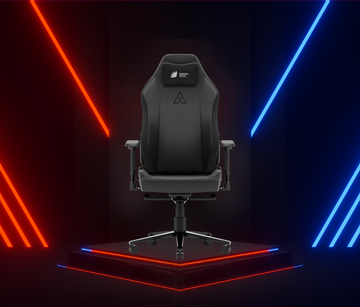Know Your Back: How One Office Chair Can Make All The Difference
Your seventh-grade science class has taught you that the spine is made up of vertebrae. Discs are located between the vertebrae and help cushion the bones in your spine, acting as shock absorbers for your body. Your discs, like you, dislike sitting at your desk for long periods. Your office chair can contribute to your back pain, so it’s recommended to use an ergonomic office chair.
Harmful effects of lousy posture and prolonged sitting:
According to a study, the sitting position increases pressure on your discs and adds stress to the discs, and the more erect the posture, the more pressure there is. Your lower spine is designed to bend inward, but prolonged sitting forces your back outwards into an uncomfortable position that can contribute to discomfort. When sitting, the spine is compressed about 30% more than when standing. Long durations of sitting raise the risk of lower back discomfort, a herniated disc, sciatica, degenerative disc disease and a slipped disc. Prolonged sitting can lead to other major illnesses such as depression, heart problems and weight gain.
Although not all sitting postures are harmful, keeping your head, shoulders, and hips in vertical alignment keeps your spine in a natural position. Sadly, most people do not sit in such a fixed position for extended periods.
Most individuals sit with their legs sprawled in front of them, which puts additional strain on the lower back while also contorting the neck, which must bend to keep the head straight. Another common but incorrect posture is slouching forward, which compresses the lumbar spine and forces the neck backwards.
Even with good spinal posture, the wrong technique when doing chores might cause unnecessary stress on numerous spinal locations. Most individuals place their computer mouse too far away from their body, putting extra strain on their back muscles and arm joints. Many individuals may also set their phone on their shoulder, holding it in place by tilting their head; this incredibly unnatural position puts a lot of strain on their sensitive neck muscles.
Mechanical stresses are associated with sitting in abnormal postures, but there are also physiological downsides. Sitting for an extended period may reduce circulation to some muscles, depriving them of nutrients and oxygen.
A good office chair can make all the difference. Here’s what to look for while buying an office chair:
• Height Adjustment
Regarding long-term ergonomics, adjustable height may be the most significant element. If the chair is too low or too high for your workstation, your spine will wind up bending or arching in an unpleasant posture, and your shoulders and neck will be affected, too)
Adjustable height is essential for individual comfort and suitability with the table or workstation. When using a keyboard, keep your upper arms at your sides and your forearms parallel to the ground to avoid tension in your neck and shoulders. Your feet must also be flat on the floor; however, this can be difficult for shorter people, especially once the chair has been adjusted. In this case, get a stool or footrest so your feet can sit flat.
• Solid cushioning
Even if your office chair isn't designed for Netflix sessions, it should be comfy. The first step is choosing a comfortable chair that supports your lower back, thighs, shoulders and upper back. You'll also want to look for a chair that moulds to your body or the firmness of its padding. Get a harder rather than softer chair because you will be seated for a long time, and the padding will wear out faster if it is softer.
• Support for the Arms
Should you choose a chair with an armrest to support you the whole day, or will they hinder your comfort? Armrests support the upper torso, shoulders, and neck, but they must be placed so that the chair may be fully drawn up under the desk. To get armrest support without interfering with your chair or desk level, look for a chair with adjustable armrests that can be raised or lowered to give support as needed without interfering with the rest of the ergonomics.
• Backrest Adjustment
The position of back support, the angle of the backrest, and the seat height are three ways the rear of a chair may give support. You might not be able to get a chair that caters to all three of these features, but you must ensure your chair caters to the one you need the most. In other words, people suffering from low back discomfort should prioritise adjustable lumbar support, whereas petite people should emphasise adjustable seat depth. People with broader requirements may opt for a chair with a variable tilt to allow mobility.
The changeable angle of the back provides for a change of position while sitting in the chair, for example, an upright position while working on your laptop and a reclining position when you are on your phone.
How to reduce back pain:
There is a plethora of research linking sitting to back discomfort, but the treatment is not that simple. The posture with the most little torque on your lower back and neck is vertically aligned, with the head and shoulders precisely above the hips. For many years, this was thought to be the best sitting posture, but a current study reveals that even this position has problems.
Although this posture puts less strain on your spine than other sitting positions, staying in it for an extended time increases your risk of lower back discomfort. Sitting upright creates vertical pressure on the spine, pressing different parts such as the spinal discs. Over time, this compression can reduce blood supply to the discs.
Let’s see what you can do to reduce back pain from sitting:
• Dynamic sitting
Sitting is an unnatural posture for the body, but if you have to sit for a lengthy amount of time, use an active movement technique. Shift your position regularly to disperse tension more equally over your body. However, keep the normal curvature of your lower spine and neck in mind.
• Take breaks
be conscious of how long you sit and break extended periods with brief pauses. Ideally, it would help if you stood or walked for a couple of minutes every half hour. This increases blood flow to your spine and back muscles.
• Standing in the workplace—one of the most common modern office fads is to do away with the chair. People are instead employing variable height workstations or treadmill stations. Standing while working is better for your back, and strolling throughout the day is an excellent method to strengthen your lower body and increase circulation.
• Try Laser Therapy
Even if you work in the most ergonomically supportive office, you may still experience soreness or stiffness after a full day of sitting. Consider using a low-level laser treatment device to alleviate discomfort after a hard workday. These devices temporarily relieve lower back discomfort caused by mild to severe pains, muscular spasms, and inflammation.
• Stretch regularly
Performing a few 10- or 15-minute stretch routines several times a day will help keep your muscles supple and limber so they don't tighten up or put excessive stress on your spine. Gentle exercise will also assist in waking the muscles up and getting the circulation circulating. Set the alarm on your phone to remind you to get up, move about, and stretch every couple of hours.
• Ergonomic office
if you want to reduce pressure on your back, you should organise your workspace to be as comfortable as possible. Ensure your desk is set up, so your forearms stretch horizontally from your elbows. A chair with lower lumbar support is required, but it must be adjusted so that your lower legs remain upright and your feet are planted on the floor. You can check out office chair for back pain on greensoul online store. The ergonomic design protects against the long-term consequences of improper postures, such as spine and joint problems. The chair is constructed with a high-density moulded foam cushion and breathable mesh material, which reduces heat build-up and promotes air circulation. A knob allows you to adjust the lumbar support in all directions. The lever may readily change the seat to different height levels.
A good office chair can make a world of difference. Find the most comfortable office chairs on greensoul.com.


